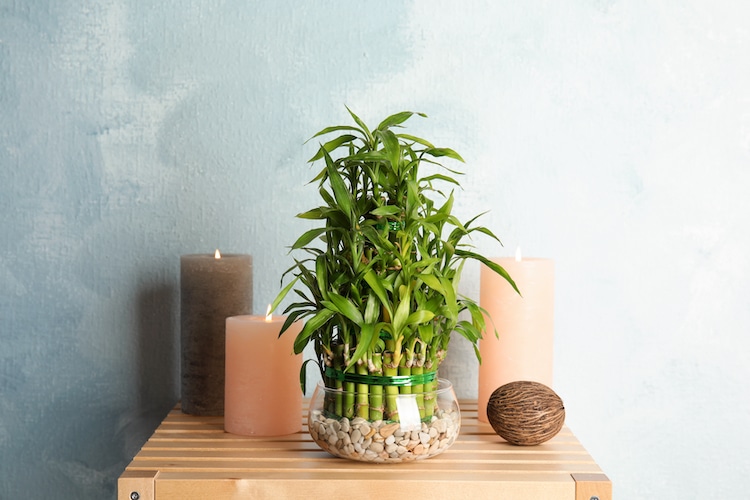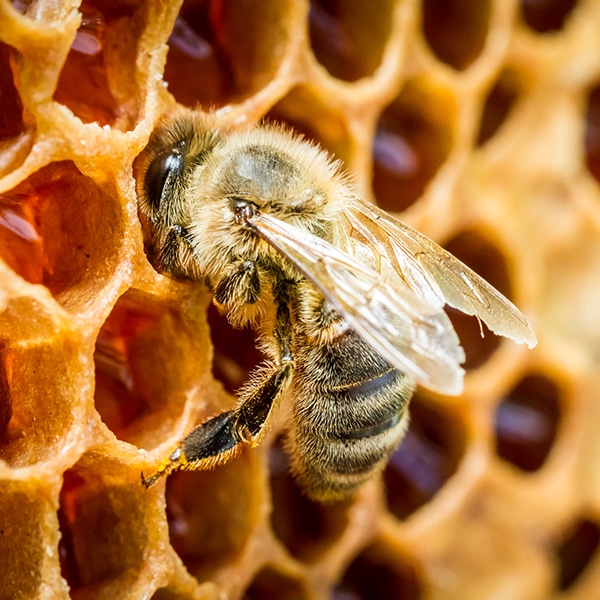
Photo: Stock Photos from Bogdan Sonjachnyj/Shutterstock
Having house plants has become very popular over the years as many people are on a quest to cultivate an indoor jungle. If you’re someone who loves the natural beauty that plants bring but don’t know what to pick, we’re here to help. We’ve compiled a list of popular house plants that will look great and thrive in many types of homes.
When it comes to bringing plants into your home, the most important thing that you need to consider is your space. Doing so will help inform what types of plants you buy. So, look around. Does your home get a lot of natural light? Or, are there quite a few dark spaces? Some plants are okay in low-light situations while others need full sun to thrive. On this list, we indicate the type of light that each plant needs as well as their watering requirements.
There are several different types of light guidelines. Bright direct light or full sun refers to placing the plant where it will get intense sunlight—think a window sill—for four to six hours a day. Bright indirect light is a type of placement that’s a foot or a couple of feet away from the window (depending on how big your window is). The light will still be plentiful, but the rays won’t be as intense. Medium light, also called indirect light, is further away than bright indirect light. If you have a western-facing window, put the plant in that room. Or, it could be several feet away from the window. Low light means that no direct sunlight will reach the plant.
Once you’ve placed a plant in your space, observe it and see how it is doing. You should be able to tell if a plant is thriving or withering. If you see that it needs a change, consider moving it to another part of your home. You’ll be amazed how finding the right place for your plant can do wonders for its growth and health.
Want to cultivate your indoor jungle? Here are 11 popular house plants and how to care for them.
Fiddle Leaf Fig

Photo: Stock Photos from Anan_R /Shutterstock
The fiddle-leaf fig is a very chic houseplant. (If you need any proof, just look up #fiddleleaffig on Instagram.) Their bushy leaves have made them a favorite of contemporary interior designers, but they aren’t the easiest plant to care for—in fact, they can be quite finicky without the right care.
Light: Medium sunlight.
Water: Let dry between waterings and do so once a week or every 10 days.
Pilea

Photo: Stock Photos from dropStock/Shutterstock
Pilea peperomiodes are a memorable plant known for their coin-shaped leaves. (They have the nickname “Chinese money plant.”) They are adaptive plants that can survive in low-light conditions and grow quickly. If you’re a beginner, give the pilea a try.
Light: Bright, indirect light. You’ll notice that the leaves will grow in direction of the light, so rotate regularly to ensure they don’t become too lopsided.
Water: Let the soil dry between waterings. Pileas are one plant that will hint it needs watering—the leaves will start to droop.
Spider Plant

Photo: Stock Photos from dropStock/Shutterstock
The spider is considered to be one of the best plants for beginners. It can grow in many types of conditions and works as a tabletop plant or as a hanging one. The plant got its name because of its spiderettes that dangle from the mother plant—like spiders hanging on a web.
Light: Spider plants prefer bright indirect light but will do with low light. Don’t place them in a window as it will burn the leaves.
Water: Allow drying between waterings. If the soil becomes too soggy, it can cause root rot.
Aloe Vera

Photo: Stock Photos from Pryzmat/Shutterstock
The aloe is a species of succulent that is a great beginner plant. It is easy to take care of as long as you have ample light in your home. And perhaps best of all, aloe has a use beyond looking pretty. You can open one of its fleshy leaves to reveal a gel that can be used to apply topically over scrapes or burns.
Light: Aloe plants like the sun, but opt for indirect sunlight.
Water: Because an aloe plant is a succulent, it can handle some drought. But that doesn’t mean it likes it, so keep a regular watering schedule and allow the soil to dry between waterings. If the plant needs water, you’ll be able to tell with shriveled leaves.
Jade

Photo: Stock Photos from Andrey_Nikitin/Shutterstock
Jade plants are popular because they are easy to grow and considered symbols of good luck. Like an aloe plant, they have green, fleshy leaves. If cared for properly, they are easy to propagate.
Light: Jade plants need full sun in order to thrive. So, if you have an open window sill, put them in it.
Water: Unlike many plants on this list, you don’t want the soil to completely dry out between waterings. You also don’t want to water the jade plant too often, as that can cause the roots to rot. Opt for watering when the top of the soil is dry to the touch.
Air Plants

Photo: Stock Photos from Aquarius Studio/Shutterstock
The name air plant is a bit of a misnomer. While its moniker might imply that the plant can survive by air alone, it just means that these plants don’t require soil in order to grow. This allows you to put air plants in all sorts of decorative dishes or even suspend them from your ceiling. Some varieties have a sculptural look to them and can add some natural drama to your home.
Light: Bright, indirect light. Avoid too much light as it can burn the plants.
Water: Watering air plants can be tricky and a combination of misting and soaking them is best. Generally, once a week or every two weeks, soak your air plants in room-temperature water for about 10 minutes. Afterward, turn them upside down and allow them to dry. Make sure to put them in a place that will dry within a few hours—otherwise, they might rot. Once a week you’ll want to mist the plants.
Snake Plants

Photo: Stock Photos from Aquarius Studio/Shutterstock
Snake plants are known for their stiff leaves that can range from half a foot to eight feet tall. This variety is another that’s perfect if you’re a beginner plant parent. These plants can grow in bright light or the dark corners of your home.
Light: This adaptive plant can thrive in many settings but they prefer indirect light with “steady sun.”
Water: Let the soil dry between waterings. During the winter, you only need to water once a month. Overwatering can be detrimental to the plant.
Bamboo

Photo: Stock Photos from New Africa/Shutterstock
Like the jade plant, bamboo has earned the reputation of bringing good fortune. It is lauded for its sculptural stalks that twist in seemingly unnatural ways. Bamboo is also hardy; it can survive in water or in soil and is okay in a variety of light.
Light: Bamboo likes bright but filtered light. Too much direct sun will scorch the leaves.
Water: Bamboo is sensitive to chlorine, which is commonly found in tap water. It’s best to use bottled or distilled water. If you don’t want to do that, simply leave the water sitting out for a day so that the chemicals evaporate. If your bamboo is in water, change the water every week to ensure it stays fresh.
Philodendron

Photo: Stock Photos from Firn/Shutterstock
Philodendrons, with their heart-shaped leaves, are another easy-to-care-for plant that can adapt to many conditions within your home.
Light: Philodendrons do best when they are near a window but no direct light will touch their leaves. If the leaves start to yellow, you’ll know it’s getting too much light.
Water: Allow the top inch of the soil to dry between waterings. A good way to measure this is to stick your finger into the soil. If the soil feels damp from the tip of your finger to the knuckle, you’ll know you need to wait a bit longer before you water again.
Calathea

Photo: Stock Photos from AngieYeoh/Shutterstock
Calatheas are beloved for their colorful leaves, many of which have painterly markings on them. This botanical is part of the “prayer plant” family, and you’ll notice that the leaves move as the day progresses. They curl up at night and open during the day, following the sun.
Light: Calatheas do best in medium to bright indirect light. They can also survive in low indirect light.
Water: Water every one to two weeks.
Monstera

Photo: Stock Photos from Soloveva Kseniia/Shutterstock
You might know Monstera by another name: the Swiss Cheese Plant. These tropical plants have natural holes that occur in their leaves.
Light: Bright to medium indirect light. Avoid direct light.
Water: Water every two weeks and allow the soil to dry out between waterings.
Related Articles:
Mesmerizing Time-Lapse Videos Show How Much Plants Move During a Day
“Plant Daddy” With Over 300 Indoor Plants Offers His Top Tip for Cultivating an Indoor Jungle
15 Different Plants You Can Buy on Amazon to Grow Your Indoor Jungle






















































































